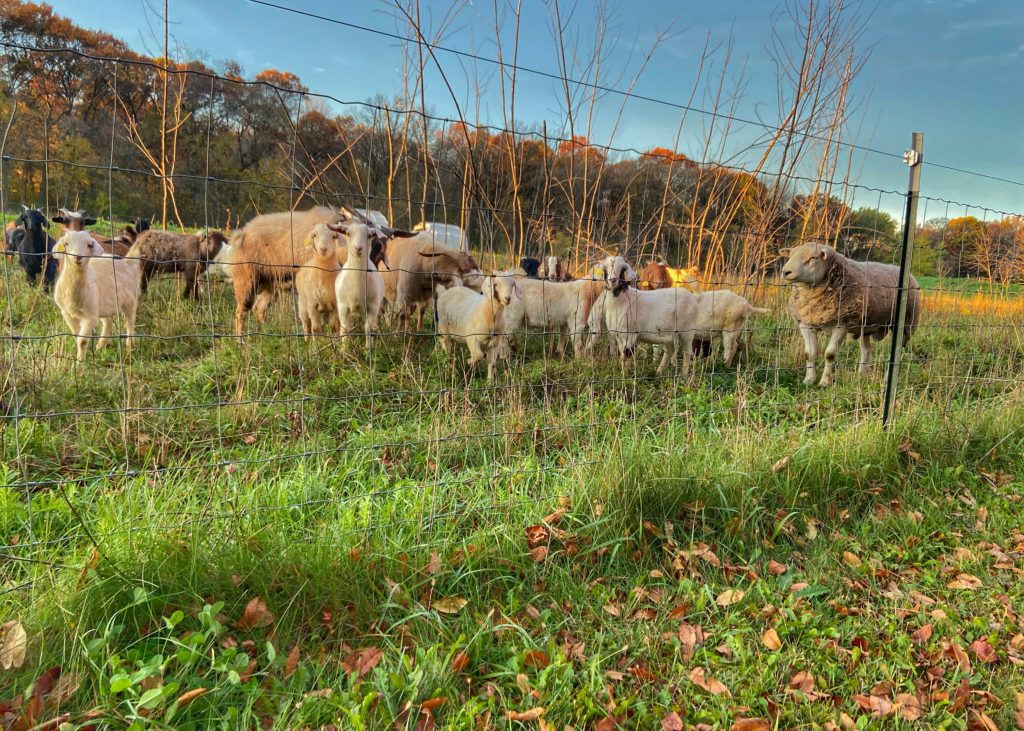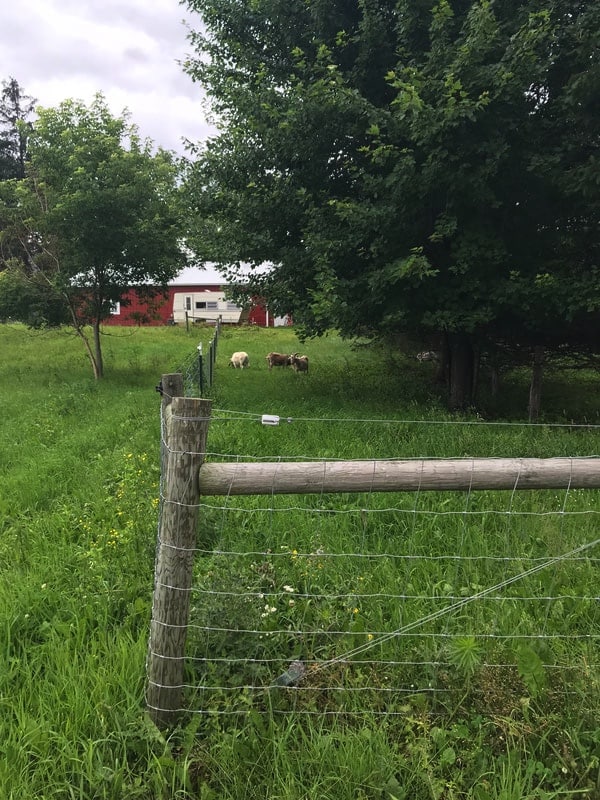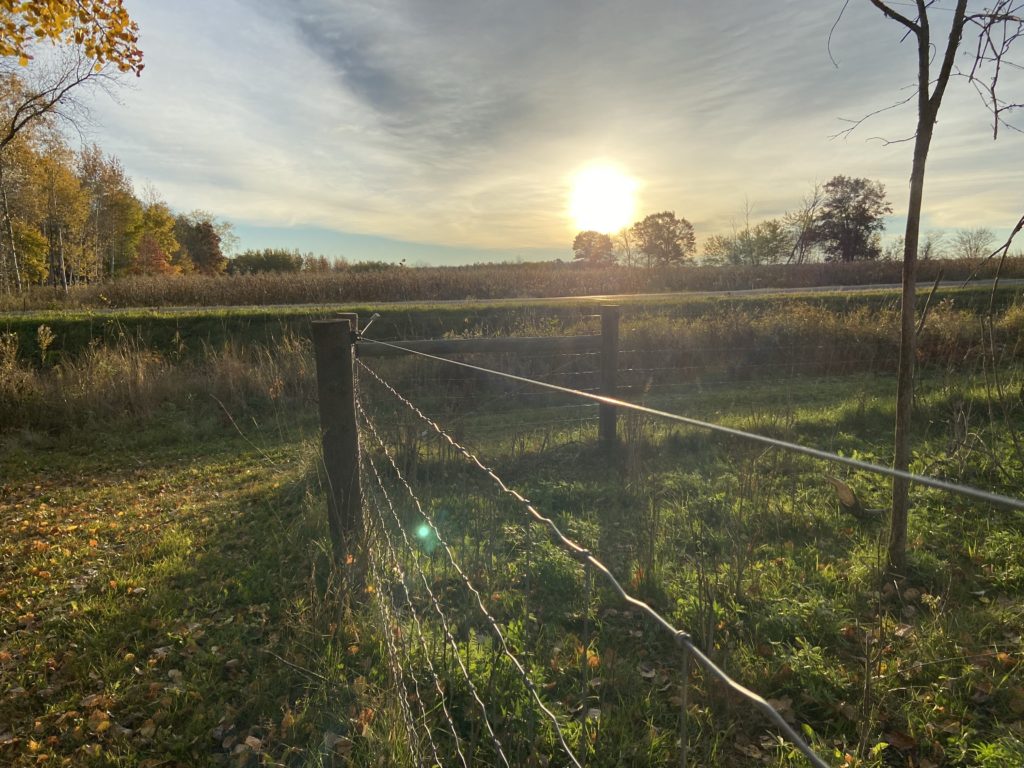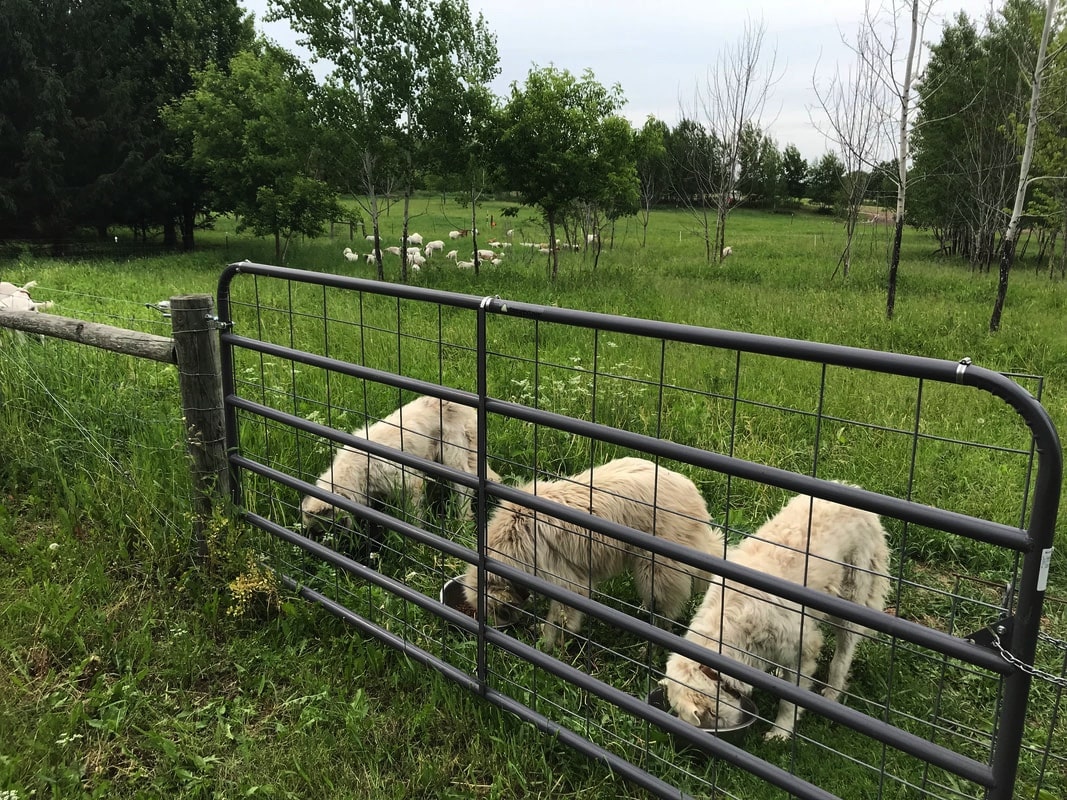Having the right goat fence is one of the most important things when it comes to raising goats. The right type of fence is extremely important. This post will cover why it’s important to have good goat fencing, requirements, and different options.
Table of contents
Benefits of having a good fence
There are many benefits to having a solid goat fencing set up:
- It acts as a physical barrier, which keeps your goats, and guardian animals inside the pen or pasture, offering you peace of mind.
- It is one layer of protection for your goats, both young kids and older adult goats. It can deter predators from getting into your pasture. However, it should not be solely depended on, since many predators can dig under fences, go through fence wires or openings, or even jump over fences. That said, it still offers a layer of protection at a basic level.
- It makes for good neighbors. Good goat fencing not only keeps your goats inside their pen or pasture, but it also prevents them from getting into your neighbor’s yard or farm field and causing damage, or even into the road, which could lead to potential accidents.
Fence requirements
While the type of goat fence can vary, there are a number of common components and specifications all fencing systems should use:
- Fence height: Standard size goat fences should be 36-48 inches high.
- Fencing material: High tensile smooth wire, woven wire, welded wire, or other options.
- Bottom wire placement: The bottom wire should ideally be barbed wire and placed a few inches above the ground, with the next part of the fence placed about six inches higher than the barbed wire. This barbed wire at the bottom helps keep predators from digging under the fence, and livestock guardian dogs from digging and getting out of the fence.
- Fence posts: Spacing varies by type of post, read the fence post section for more details.
- Gates
- Electric / energizer: Optional

Permanent vs temporary fence
There are two main goat fencing categories: permanent and temporary. For this blog article we’ll be focusing on permanent fencing options. This type of fence is sometimes also called perimeter fencing or field fencing. This is the best option for the long term for your goat farm as it is more durable.
Temporary fencing is a great way to get started with a fencing set up with your goats, or if you’ll be moving them more frequently with rotational grazing. A few options we’ve used on our farm include electric net fencing and Smart Fence.
Goat fencing options
There are several goat fencing options to choose from. But, be sure to keep in mind the fencing requirements listed above.
Electric fence
Electric goat fence is the most effective way to keep your goats in their pasture, pens or yards. Often though it can be intimidating to goat owners. Once your electric fence is set up and your goats are trained to respect it, you’ll find that it really is a great option.
Electric fences can be set up a few different ways. Here are two more common options:
- Multi-strand wire fence option using high tensile wire, where typically alternating wires are electrified. Depending on the time of the year, certain wires may or may not be “hot” depending on the age of your goats or the height of the pasture grass.
- Woven wire with a strand of hot wire placed about 4-6 inches above the top of the woven wire.
How does electric fence work?
The “hot” or electrified wire has electricity “pulsing” through it. When an animal (or a goat farmer) touches the wire it will give them a startling feeling. It will not hurt them, but it will not be comfortable.
The idea is that the goats will associate the fence with the electrical shock experience and learn to stay inside of it. This is why properly training your goats to stay inside an electric fence is very important.
Cons of electric fence
Goats require more of a physical barrier as compared to other livestock, which means there’s more fence that’s typically electrified and usually that includes fence closer to the ground due to the physical size of goats.
Often electric fences can ground out, making it not as effective, if there’s tall grass along the fence line. As a farmer you’ll need to maintain the fence line by keeping the grass cut, and also consider using electricity just along the top of the fence or have options to turn different wires “on and off” in a multi-wire system. For this same reason, I don’t recommend using an electrified woven wire.
High tensile wire or field wire fence
High tensile wire is a common fencing option for goats. It can also be used in an electric fence system.
A five strand wire fence is recommended for use with goats. High tensile is beneficial since it is more durable.
Woven wire fence
Woven wire is a great option for goat fencing. Ideally it should be made of high tensile wire for durability. 14-gauge wire is recommended.
The woven wire opening size options will vary. General guidance for woven wire opening spacing is 4×4 inches up to 12 inches between the vertical openings.
Keep in mind smaller openings will make it less likely for smaller predators to get into the pasture or pen, and also keep smaller animals or goat kids inside the fence.
However, smaller openings can present issues for younger animals with horns. On our farm we’ve found that many of our yearling goats will get their heads stuck in the fence. As the goats get older, typically their horns will stop them from doing this.
If a goat continuously gets stuck, we may put a “crown” on her head temporarily to help train her to not stick her head through. This is a piece of flexible pipe about 8-10 inches long and then duct taped to the horns. If the goat tries to push her head through the fence to eat, the pipe will stop her. It’s a safe way to train her to stop this habit. Goats that are stuck in fences may be more susceptible to predators or bullying from more aggressive goats.
If you’re grazing your goats, this may also be a sign that it’s time to move them to a new paddock so they have more pasture to eat.
Welded wire or cattle panels
Welded wire, cattle panels or stock panels can also be an easy option to get a goat fence up in short order. However, it can be a very expensive option.
On our farm, we’ve used cattle panels for small outside pens and also on gates.
Pallet fence
Pallet fences for goats can be a tempting, quick option to get started. However, I’d strongly recommend upgrading your goat fencing option as soon as you’re able to do so.
While they can do the job, slid over t-posts, they aren’t made for durability. I can think about all the times we’ve had farm supplies delivered and how easily the pallets can break. Additionally, pallet wood isn’t treated, which means it will likely rot sooner than later.

Fence posts
There are a number of fence post options for your goat fencing. In some cases you may be using a combination of different fence posts.
- Wooden posts: These are good for corner posts, such as h-braces, and for added fence strength along the fence line. For example, our farm’s permanent fence has a wooden fence post roughly every 300 feet, and in areas where there’s a lowing area. We will use t-posts (see next bullet) in between those spans, roughly every 16-20 feet. Make sure to get treated fence posts for the most longevity.
- Metal t-posts: T-posts are a great option for shorter fence lines and use with welded wire or cattle panel fences. They can be used in combination with wooden fence posts, as described above, with five strand wire or woven wire fencing.
- Step in plastic posts: These are a quick option for temporary fencing set up, typically with electrified poly wire. For more information on using this type of fence post, read this article.

Gates for goats
As you’re considering your goat fencing set up, don’t forget to think about your gates. On our farm we use traditional pipe gates with cattle panels mounted on them with hose clamps. We’ve found this option to be more durable than the gates with wire mesh built in.

DIY fence vs. hiring a professional
You’ll also want to think about if you’ll be installing your goat fence yourself or if you’ll hire it out. Keep in mind that goats have more fencing requirements than other livestock species and have greater odds of getting out of their fence.
On our farm we decided to invest in good goat fencing and hire a professional to install it for us. I wanted the reassurance that our fence was installed correctly and would be effective in keeping our goats inside the paddock. I didn’t want to lose our goats, nor did I want to be in a situation where we weren’t on good terms with our neighbors.
How our goat fence is set up
Our perimeter fence specs were developed by a USDA – NRCS conservationist / grazing specialist with some consultation from a well-regarded fence installer who has experience with fencing goats and sheep.
Our goat perimeter fencing is about 47 inches high and is high tensile woven wire with a strand of hot high tensile wire about 6 inches above the woven wire to keep predators from jumping or climbing over and keeping the goats in.
At the bottom, a few inches below the woven wire and a few inches above the ground is a strand of barbed wire to deter animals from digging under, specifically our livestock guardian dogs and predators, like coyotes. Fence posts are spaced about 16 feet.
The woven wire opening is 6 inches wide and starts at 3 inches tall openings. Each opening going up to the top gets a little bit bigger, with the top opening at 7 inches tall.
The majority of our goats are horned. On occasion some of our younger goats will get their heads stuck in the fence, trying to eat grass outside the pasture. Usually if there’s enough to eat in a paddock (a section of the pasture) this isn’t an issue. Older goats typically can’t push their heads through since their horns are large enough to stop them.
Other notes
Fencing recommendations are based on
- Personal experience with our meat goat farm, where we graze a sizable herd of goats that we raise on pasture
- USDA NRCS fencing guidance
- Recommendations from our fence installer, Randy Cutler, who has a lot of experience with sheep and goats fencing
Where to order fencing supplies for goats
We’ve been using Gallagher products from the very start with our energizers and portable fencing. I’m proud to be a Gallagher partner and also share with you a 10% discount code – CYLON – on your entire order on the Gallagher NA website, for orders in the U.S. and Canada (affiliate link).
Related blog posts
- Determining how many goats per acre for your pastures
- How to use a soil map for your pastures
- Three portable goat fencing options
- All about electric fence netting
- Gallagher Smart Fence Review

[…] Pasture fencing for goats (post) […]
Your fence type would not be used on our farm. Goats, for all their antics, are prone to getting horns stuck in the wiring. You have an interesting, well presented article. But unless electric, we wouldn’t use this.
Woven wire can be an issue at times with some of our younger goats. Once their horns are longer it doesn’t seem to be a problem. Occasionally we will duct tape a stick to their horns and that solves the problem for the repeat offenders.
In general, if they have enough to eat/moved frequently to new paddocks, we have little issues with our fence.
You can always use wider openings to allow for the stock to move their heads out easier on their own